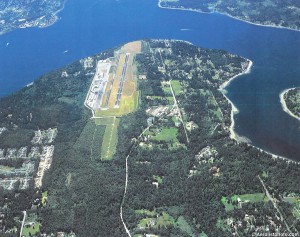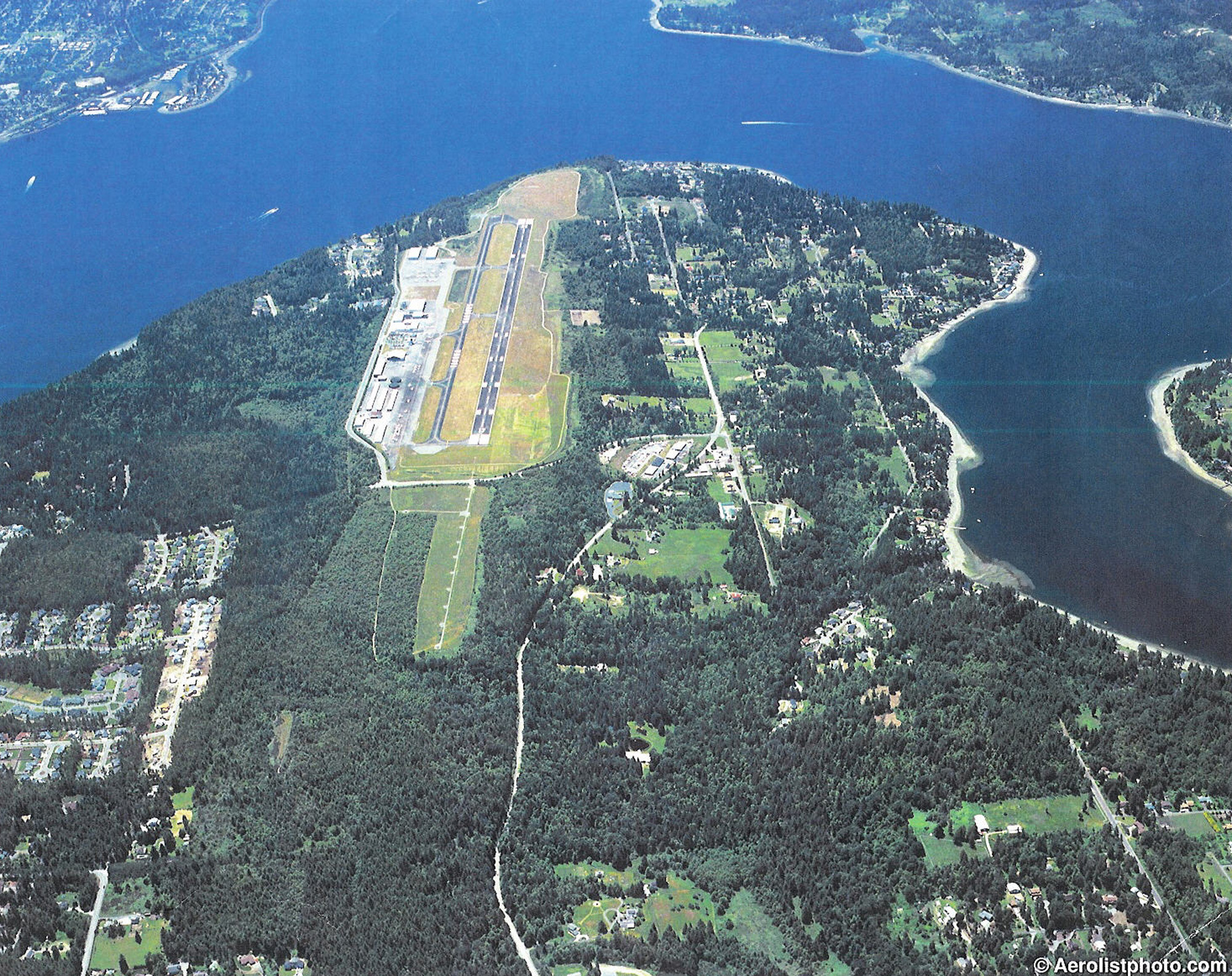
Tacoma Narrows Airport may soon be privately owned. Negotiations are underway after purchase talks with Pierce County failed.
By Terry Stephens
Sale talks are progressing with a private company that’s interested in buying the 43-year-old Tacoma Narrows Airport (TIW), south of Seattle. The city of Tacoma owns the airport, which has been losing money.
City officials say they hope to have the deal completed by the end of February. Earlier, efforts to sell Tacoma’s general aviation airfield to Pierce County hit an impasse over the sale price. The county had offered $4 million, including $1 million to complete a new runway safety zone, and construction is already under way. Pierce County operates Pierce County Airport (1SO) in Puyallup, Wash., and expected that there would be economic advantages to operating two airports that would help make Tacoma Narrows Airport profitable. Tacoma held out for $4.5 million, in order to recover the $3.5 million loaned to the facility for airport operations.
City Manager Eric Anderson said the unidentified potential buyer, an out-of-state company experienced in airport operations, is willing to pay more for the airport than the county. Getting the best price for the airport is simply a matter of due diligence on the city’s part, Anderson said.
The airport has been unprofitable for years, showing a $550,000 operating deficit over the last two years, according to a May 2006 report. Studies by four consultants show the value of the 644-acre airport ranges from $4 million to as much as $20 million, depending on future use.
TIW is built on city property and is surrounded by Pierce County in the unincorporated Gig Harbor area west of Tacoma. The 14 city-owned buildings are generally in good condition. Seven jets, 128 single-engine aircraft, 232 multi-engine planes and 12 turboprops based at the field provide more than 51,000 annual flight operations.
The airport provides 231 jobs, with annual salaries amounting to $5.4 million. Combined with indirect benefits, consultants estimate the airport represents nearly $28 million in community economic impact and 328 jobs.
Neighbors have complained for years about aircraft noise and expressed concern regarding any extension to the 5,002-foot-long runway, enabling it to accommodate larger aircraft or air carriers. The city’s 20-year plan includes no runway extension or air carrier service for this airfield, which is only five miles from downtown Tacoma, Anderson said. A current runway project is underway, but it’s only for creating an expanded safety zone at the end of the landing strip.
TIW provides both instrument and GPS landing systems, with tower operations from 8 a.m. to 8 p.m., 24-hour U.S. Customs service and aircraft repairs, parts and maintenance by various businesses. An on-site restaurant is open daily.
Mike Pickett, owner of Pavco Aviation, the field’s FBO for 25 years, said he couldn’t imagine a private entity owning the airport.
“The city doesn’t get to just put out a ‘for sale’ sign and make a deal without FAA approval,” he said. “A lot of the airport has been developed with FAA grants.”
Pickett also said the sale might be complicated by the city’s numerous lease agreements with airport businesses, which will have to be renegotiated. Angry with the city’s handling of the airport operations, he said the facility should be a showplace. He doesn’t feel that the city has operated it that way.
“The value of the airport to the community and local economy is shown in the variety of uses the facility provides,” said Rich Mueller, airport operations manager.
Presently, the airport is used not only by GA pilots, but also by business owners who house six corporate jets there. Air traffic includes about four business aircraft daily.
The airport is also used extensively for medical flights, with aircraft flying in everything from specialized care patients to organs for transplant operations. Airlift Northwest, Puget Sound’s air evacuation service, trains at the field and uses it extensively for medical transport flights and emergencies.
The airfield is designated as a disaster relief staging area, for supplies, vaccines and emergency personnel, and would be the base for emergency communications equipment for much of Tacoma. It’s home base for Angel Flight pilots, who fly patients for medical treatment, and is the airport of choice for charity events for local schools, the Red Cross, Tacoma Rotary and the local division of the Forgotten Children’s Fund.
Each year the airport is the site for the Freedom Fair Air Show over Commencement Bay, and popular entertainers and visiting dignitaries use the airport extensively, rather than using Seattle-Tacoma International Airport (SEA), several miles further north.
Hundreds of local residents have learned to fly from Tacoma Narrows Airport. Civil Air Patrol operations are based there, and the airport provides a training site for the Tacoma police SWAT team, with future training planned for city and county police and fire fighters.
Tourist sightseeing flights and aerial photography planes use the field regularly, along with charter flights and several area television news station helicopters. GA aircraft refuel there.
Despite noise complaints from neighbors, many who have built homes closer to the airport boundaries than when it opened, the airport also reduces noise, according to Mueller.
“Because the airport has a control tower, the field has controlled airspace, keeping large military jets and commercial airliners flying into McChord AFB or Sea-Tac at higher altitudes during landings and takeoffs,” Mueller said. “That reduces noise for Tacoma area neighborhoods.”
Some city officials believe that shifting airport ownership from municipal to private ownership may be the key to making the airfield profitable, particularly because the Tacoma area’s growing population is expected to lead to increasing demand for GA and business aircraft services.











